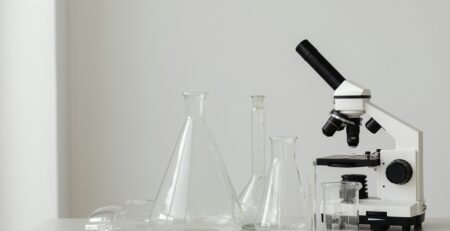29
Aug
Top 5 Mistakes When Using Laboratory Beakers (and How to Avoid Them)
Beakers are one of the most widely used pieces of lab glassware, but small mistakes in their handling can lead to inaccurate results, wasted reagents, or even breakage. By understanding common errors, Australian labs can extend the lifespan of their glassware and improve the reliability of experiments.
1. Using Beakers for Precise Measurements
Beakers are designed for approximate volumes, not analytical precision. Graduations are indicative, but not as accurate as volumetric flasks or burettes (ISO 1042, ASTM E288 standards). Relying on a beaker for titrations or quantitative analysis is a common mistake.
Solution: Use beakers for mixing, heating, or rough measurement only. For precise work, switch to calibrated volumetric glassware.
2. Exposing Beakers to Sudden Temperature Changes
Even borosilicate BORO 3.3 glass, with its low thermal expansion, can fracture if transferred directly from ice to flame or vice versa.
Solution: Allow beakers to gradually equilibrate to room temperature before heating or cooling. This ensures both safety and longevity.
3. Pouring Without Considering Spout Design
Improper pouring can cause reagent loss or contamination. Some labs overlook the fact that low-form vs tall-form beakers have different spout behaviours.
Solution: Choose the right beaker form and use steady, controlled pouring. LabChoice BORO 3.3 beakers are designed with precision spouts to reduce waste.
4. Overheating or Flame Misuse
Direct flame heating without protective measures can cause stress fractures or inaccurate results due to uneven heat distribution.
Solution: Use a wire gauze or ceramic pad when heating on a flame, or prefer a hot plate with magnetic stirring for controlled conditions.
5. Poor Cleaning Practices
Residue from detergents, acids, or solvents can affect subsequent experiments and reduce glass clarity. Plastic scrubbing can also cause micro-scratches.
Solution: Clean beakers using mild detergents or specialised lab cleaners, rinse thoroughly with distilled water, and allow to air dry inverted. For stubborn residues, acid cleaning should follow AS 2243.2 safety guidelines.
Sustainability Insight – Glass vs Plastic Beakers
Reusable borosilicate beakers significantly reduce plastic waste in Australian labs. While polypropylene beakers are suitable for teaching or field use, BORO 3.3 glass beakers last for years, lowering both cost and environmental impact. Supporting glass use aligns with university sustainability policies and industry waste-reduction goals.
Lab Anecdote
At a Melbourne QC lab, a team switched from soda-lime to borosilicate beakers after repeated breakages during heating. The move reduced replacement costs by 40% in a single year, while also improving consistency in thermal experiments.
FAQs
Can beakers go in the autoclave?
Yes, borosilicate beakers can withstand autoclave cycles at 121 °C, but check for existing cracks before sterilisation.
Are tall-form beakers stronger than low-form?
Tall-form beakers are better for mixing small volumes with less splashing, but both types are equally durable when made from BORO 3.3 glass.
How do I extend the life of glass beakers?
Avoid thermal shock, clean properly, and store them upright or in protective racks.
Comparison Table – Beaker Use Do’s and Don’ts
| Practice | Mistake (Don’t) | Best Practice (Do) |
|---|---|---|
| Measurement | Use beakers for titrations | Reserve for mixing/rough volume estimates |
| Heating | Direct ice-to-flame transfer | Allow gradual temperature transitions |
| Pouring | Spill due to spout misuse | Use proper form with precision spout |
| Cleaning | Harsh scrubbing residues | Gentle detergent + distilled water rinse |
| Sustainability | Single-use plastics | Reusable BORO 3.3 glass beakers |
References
- ISO 3585: Borosilicate Glass 3.3 – Specifications
- ASTM E438: Laboratory Glassware – Quality Standards
- AS 2243.2: Safety in Laboratories – Chemical Aspects
- University of Sydney – Glassware Handling Guidelines

